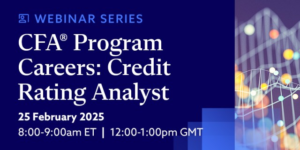Book Review: The Ownership Dividend
The Ownership Dividend: The Coming Paradigm Shift in the U.S. Stock Market. 2024. Daniel Peris. Routledge — Taylor & Francis Group. Could the next opportunity in the stock market be with dividend stocks? According to Daniel Peris, the answer is “yes,” and after reading his insightful book, The Ownership Dividend: The Coming Paradigm Shift in the U.S. Stock Market, readers may find it hard to disagree with him. Peris is a senior portfolio manager at Federated Hermes, having joined the firm in 2002. His focus has been dividend-paying stocks, and he is considered one of the leading authorities on the subject. Previously, Peris authored several books on investing, including two about dividends: The Strategic Dividend Investor (McGraw Hill, 2011) and The Dividend Imperative (McGraw Hill, 2013). Both books remain valuable for any investment professional because they challenge one’s assumptions about how well companies use their cash. In The Ownership Dividend, Peris writes that there is soon to be a realignment in the stock market that could create “profitable opportunities for those who are prepared.” The shift will be from investors preferring a price-based relationship with their investments over a cash-based one. After four decades of an “anything goes” environment, where investors were dependent on the ever-changing price of a stock, Peris believes the tide has begun to turn. Investors will demand that more companies share their profits via dividends. Predicting a realignment in the stock market is bold and could easily be dismissed; however, Peris makes a great case for why dividends should be given a lot more attention than they currently receive. Peris carefully explains how the past four decades of declining interest rates have led investors to focus on the price growth of shares, rather than the income they provide. His argument is well crafted, and he challenges the generally accepted notion that large, successful companies do not need to share their earnings with shareholders by paying dividends. By recounting the role that dividends historically played in the stock market, Peris takes readers through an account of how dividends encouraged investment and how they have been diminished by the misapplication of the work of Franco Modigliani and Merton Miller, whose Dividend Irrelevance Theory has been misused as an argument for companies not to pay a dividend at all. The Dividend Irrelevance Theory states that the dividend policy of a company has no effect on its stock price or capital structure. The value of a company is determined by its earnings and investment decisions, not the dividend it pays. Thus, investors are indifferent as to whether they receive a dividend or a capital gain. As Peris points out, however, this theory is often misunderstood. Created in 1961, the theory assumes that most companies would be free cash flow negative, because they operated in capital-intensive industries and would need external capital to fund their growth plans and to pay dividends. While that may have been the case in the 1960s, Peris estimates that this situation applies to only 10% of the stocks in today’s S&P 500 Index. The current S&P 500 is made up primarily of service companies that are free cash flow positive and have sufficient cash flow to fund their growth and also pay a dividend. Peris provides countless reasons for the role that dividends play as an investment tool, but his review of stock buyback programs should be read by every investor. He is ahead of his time and unafraid to point out that perhaps the emperor has no clothes. While many on Wall Street applaud stock buyback programs as a tool to boost earnings per share, Peris exposes the reality that too often a significant portion of what is “bought back” is used for employee stock option plans. Investors would be well served to understand how stock buyback programs are often diluted by stock compensation plans. In fiscal year 2023, Microsoft repurchased $17.6 billion of its common stock and issued $9.6 billion in stock-based compensation. Microsoft is hardly an outlier; the past 40 years have seen dramatic growth not only in stock buyback programs but also in employee stock option plans. Over the course of 10 chapters, Peris makes a compelling case for the importance of dividends. His book is written for practitioners, not academics, which makes the book approachable and absent of any pretense. While his target audience may not be professors, it would be a useful book for anyone teaching a course on investing, which should include the idea that on Wall Street, there is never just one way to value an investment. The fact that investing in dividend-paying stocks is out of fashion on Wall Street is well accepted; even Peris acknowledges that fact. But what if Wall Street is getting it wrong? What if Peris is right that dividends will soon become much more important? As Peris sees it, the fall in popularity of dividend investing can be attributed to three factors: the decline in interest rates over the past four decades, the change in the securities tax code in 1982 that enabled share buybacks, and the rise of Silicon Valley. These three factors caused the stock market to shift from a cash-based return system (where dividends mattered) to one that is driven by near-term price movements. However, these factors have potentially run their course. According to Peris, “The 40-year decline in interest rates has come to an end.” Over time, he maintains, the market will revert to where investors will expect a cash return on their investments. Each factor is thoroughly explored by Peris, but his review of the relationship between interest rates and the cost of capital is especially timely. As interest rates fell from their highs in the early 1980s, companies had little difficulty raising capital. The recent rise in interest rates could make it more difficult. It was not long ago that investors were faced with money market funds and CDs having negative real rates of return, leaving them few options in which to invest for current
Book Review: The Ownership Dividend Read More »













